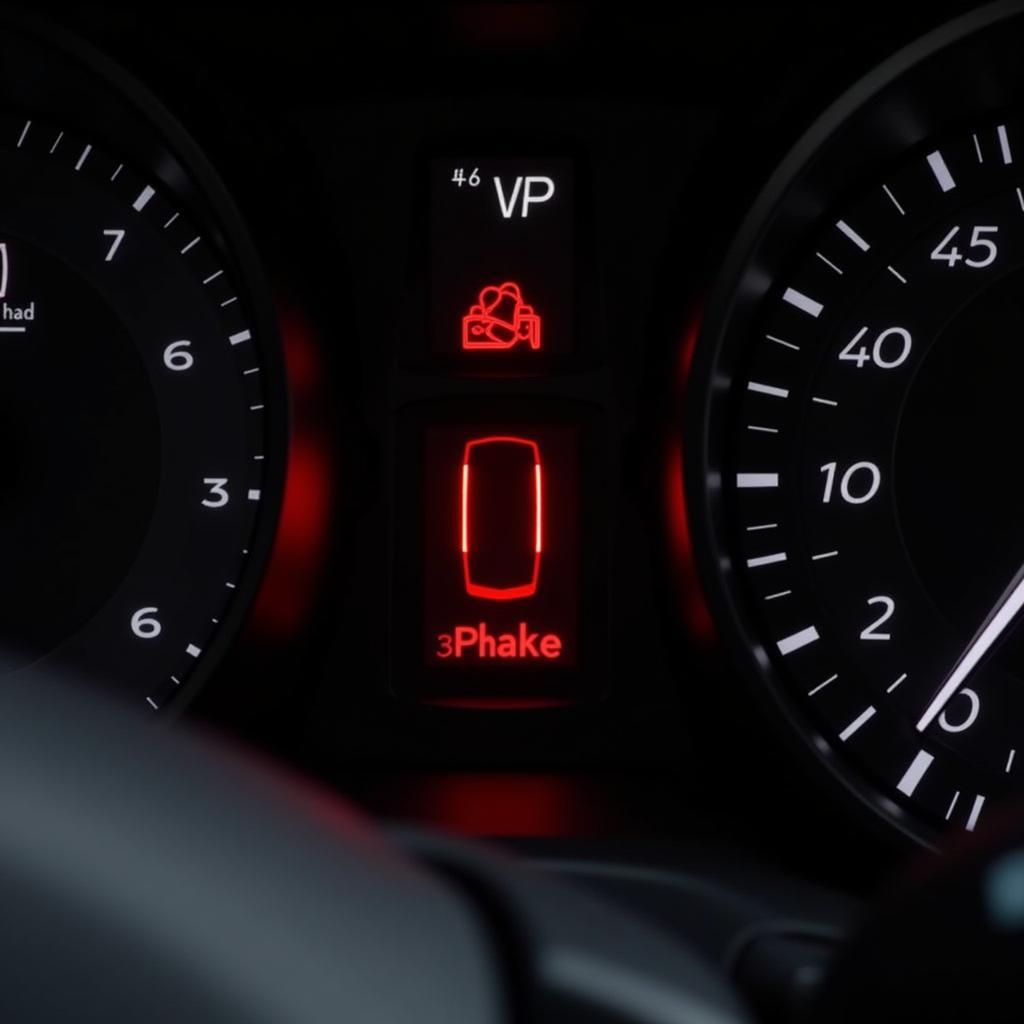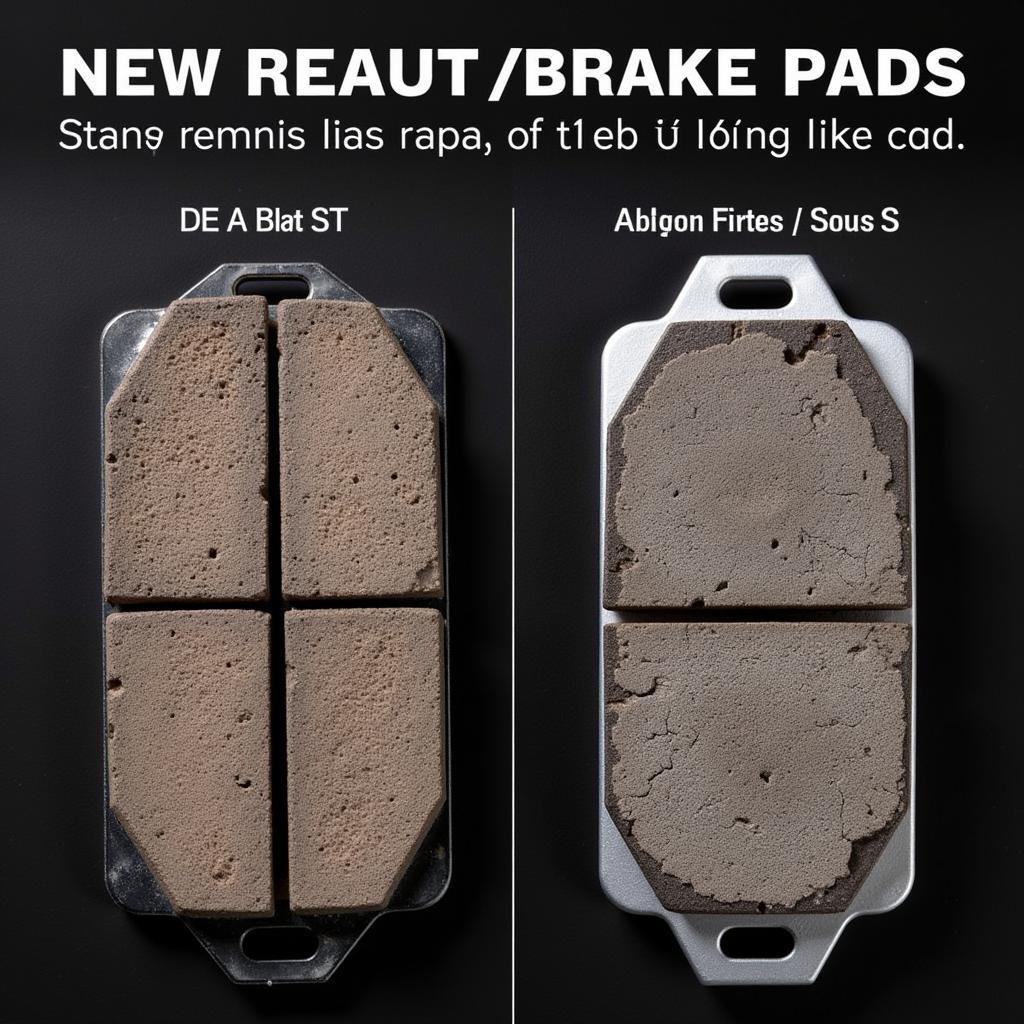The brake pad warning light on your VW Polo is a crucial safety feature designed to alert you to potential issues with your braking system. Ignoring this light could lead to costly repairs or, worse, compromise your safety on the road. This comprehensive guide will walk you through understanding the VW Polo brake pad warning light, its common causes, and the steps you can take to address them.
Decoding Your VW Polo’s Dashboard: What Does the Brake Pad Warning Light Mean?
The brake pad warning light, typically a red circle with an exclamation mark in the center or a circled inscription “BRAKE”, illuminates on your VW Polo’s dashboard for two primary reasons:
-
Worn Brake Pads: This is the most common reason for the light to appear. Brake pads, the components that press against the brake rotor to slow or stop your car, have a finite lifespan. Over time, they wear down due to friction.
-
Low Brake Fluid Level: The brake pad warning light can also signal low brake fluid. Brake fluid is a hydraulic fluid that transmits force from your brake pedal to the brakes themselves. A low level can indicate a leak in the system, which needs immediate attention.
Why Is My VW Polo Brake Pad Warning Light On?
While worn brake pads are the most frequent culprit, several other reasons could trigger the brake pad warning light on your VW Polo:
-
Faulty Brake Pad Wear Sensor: Most modern cars, including VW Polos, have wear sensors embedded in the brake pads. These sensors are small metal tabs that contact the brake rotor when the pads wear thin, completing a circuit and illuminating the warning light. A malfunctioning sensor could trigger the light prematurely.
-
Stuck Brake Caliper: The brake caliper houses the brake pads and pistons. If a caliper becomes stuck, it can cause the brake pads to constantly rub against the rotor, leading to premature wear and activating the warning light.
-
Damaged Brake Lines or Hoses: Brake fluid travels through lines and hoses to reach the calipers. A leak in these components can lead to low brake fluid levels, triggering the warning light.
-
Worn Brake Rotor: While less common, a severely worn or warped brake rotor can also activate the warning light. This usually happens in conjunction with worn brake pads.
 VW Polo Dashboard with Brake Pad Warning Light
VW Polo Dashboard with Brake Pad Warning Light
What to Do When Your VW Polo Brake Pad Warning Light Comes On
If the brake pad warning light illuminates while driving, it’s crucial to remain calm and take the following steps:
-
Safely Pull Over: Find a safe location to pull over as soon as possible. Driving with potentially compromised brakes can be dangerous.
-
Check Brake Fluid Level: With the engine off, locate the brake fluid reservoir under the hood. Check the fluid level, which should be between the “Min” and “Max” marks. If it’s low, adding brake fluid might be a temporary fix, but it’s essential to have a mechanic diagnose the underlying leak.
-
Inspect Brake Pads: If you’re comfortable doing so, you can visually inspect your brake pads. Look through the spaces between the wheel spokes to check the thickness of the brake pad material. If it’s less than ¼ inch, it’s time for a replacement.
Note: Driving with extremely worn brake pads can cause damage to the rotors and calipers, leading to more expensive repairs.
Resolving the Issue: Should You DIY or Seek Professional Help?
Replacing brake pads is a routine maintenance task that many car owners can handle themselves. However, diagnosing and repairing other brake system issues often require specialized tools and knowledge.
If you’re unsure about the cause of the warning light or uncomfortable working on your vehicle’s braking system, it’s always best to consult a qualified mechanic.
 Comparison of Worn and New Brake Pads
Comparison of Worn and New Brake Pads
VW Polo Brake Pad Warning Light: FAQs
1. Can I drive my VW Polo with the brake pad warning light on?
While you might be able to drive a short distance, it’s strongly discouraged. Driving with worn brake pads can compromise your braking ability and potentially damage other brake components.
2. How much does it cost to fix the brake pad warning light on a VW Polo?
The cost depends on the underlying issue. Replacing brake pads is a relatively affordable repair. However, if the problem stems from a brake fluid leak, faulty sensor, or damaged caliper, the cost can be significantly higher.
3. How often should I replace my VW Polo’s brake pads?
Brake pad lifespan varies depending on driving conditions and habits. However, it’s generally recommended to have them inspected every 12,000 miles and replaced every 20,000-70,000 miles.
4. Can I top up my VW Polo’s brake fluid myself?
Yes, you can add DOT 4 brake fluid, the type recommended for most VW Polos. However, ensure you use a new, sealed bottle and avoid spilling any fluid, as it can damage your car’s paint. Remember, topping up the fluid addresses the symptom but not the underlying cause, so a mechanic visit is still necessary.
5. Can a faulty brake pad wear sensor cause the light to stay on even after replacing the brake pads?
Yes, a malfunctioning sensor can trigger a false positive even with new brake pads. If the light persists after replacing the pads, the sensor might need inspection or replacement.
Keeping Your VW Polo Safe: Prioritizing Brake Maintenance
The brake pad warning light is a crucial safety feature in your VW Polo. Understanding what triggers it and how to respond ensures the optimal performance of your braking system and, most importantly, keeps you safe on the road. Regular brake inspections and timely replacements are essential aspects of car maintenance that should never be overlooked.
If you’re experiencing issues with your VW Polo’s brake fluid warning light, you can find more information here: vw polo brake fluid warning light.
